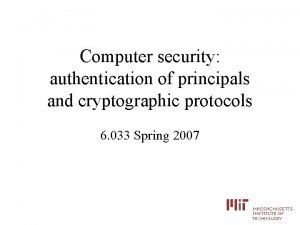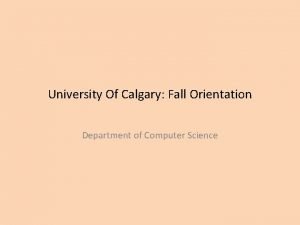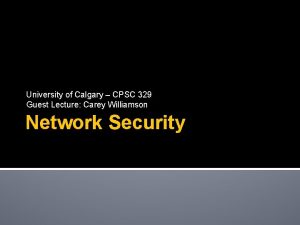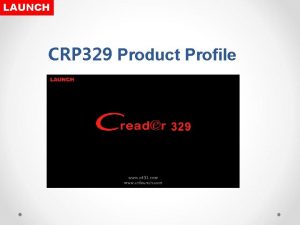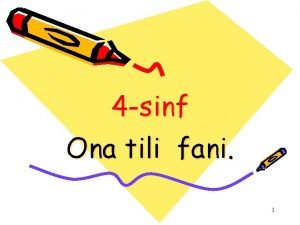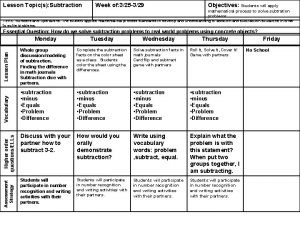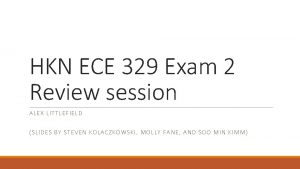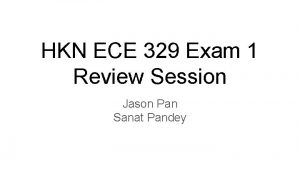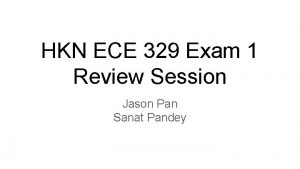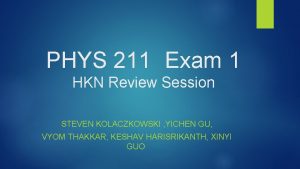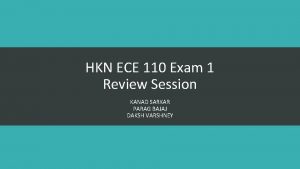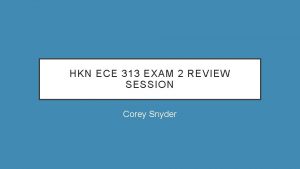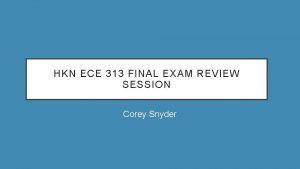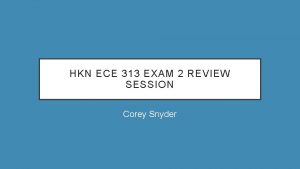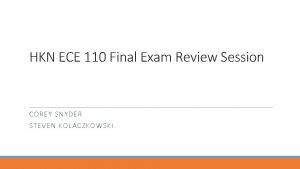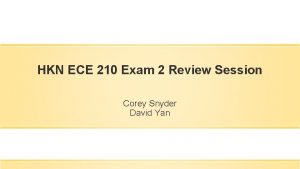HKN ECE 329 Exam 2 Review session STEVEN



















- Slides: 19

HKN ECE 329 Exam 2 Review session STEVEN KOLACZKOWSKI MILAN SHAH

Magnetostatics ( ) • Lorentz Force: • Biot-Savart Law: • Useful for finding differential B at a point and the force on one wire due to another

Ampere’s Law • Current Density (J): Amount of current flowing over a given area • Magnetic Field Intensity (H): • Ampere’s Law: Used to find the magnetic field around current carrying devices. • Use RHR to find direction on field • Wire: • Sheet of current: • Solenoid:

Continuity Equation and Maxwell’s Correction • The amount of charge in the universe is a constant and must be conserved in isolated systems • This leads to the continuity correction for charge carrying systems: • In order to satisfy continuity, we must add a displacement current to Ampere’s Law: • So, our 4 final Maxwell equations are:

Non-Conservative Fields • Integral of E·dl around a closed path is no longer zero! • Magnetic Flux: Amount of magnetic field lines penetrating a surface • Electromotive Force (emf): Change in voltage between a point and itself which gives rise to a current in the wire.

How do we get non-zero flux? 1. Area or B·d. S changes • Example: Wire entering a uniform magnetic field, wire rotating in a constant magnetic field 2. Time varying B 3. Position dependent B and v≠ 0 • • Example: Wire loop moving away from a current carrying wire Current through the wire: • Negative sign is used to indicate that the current opposes changes in flux

Inductance (L) • The tendency of a device to resist changes in current. Measured in Henry's

Boundary Conditions

Materials Diamagnetic (Xm < 0): magnetic dipole opposes external field. Ex: Water, Copper Paramagnetic (Xm > 0): magnetic dipole points in same direction as external field. Ex: Aluminum Ferromagnetic (Xm >> 0): Incredibly strong atomic dipole. Ex: Iron

Wave Equation In a charge free region with 0 conductivity: ◦ Found by combining Faraday’s Law and Ampere’s Law (assuming ρ=0, σ=0, ε and μ are constants) o Solved by the sine and cosine function therefore it can be solved by any Fourier Series o Follow D’Alembert solutions Useful relationships:

Poynting’s Theorem Poynting Vector: ◦ S has units of W/m 2 Poynting’s Theorem: o If E·J is positive, the area is absorbing power o If E·J is negative, the area is supplying power Power relation: Average Poynting:

Plane Wave Sources 1. Direction of H is given by the RHR, magnitude given by: • Direction is different on the other side of the source!!! 2. E points opposite of Js • Direction is the same on the other side of the source!!! 3. Wave propagates away from source 4. Relate magnitudes of E and H: 5. Solve for Poynting Vector: • S points in the direction of propagation (perpendicular to source)

Previous Exam Questions

Spring 2016 #1

Spring 2016 #1

Spring 2016 #2

Spring 2016 #4

Summer 2015 #1

Exam 2 #5
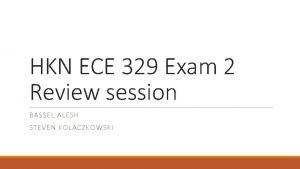
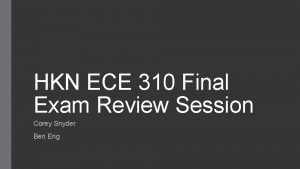
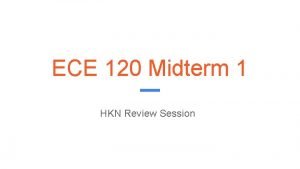
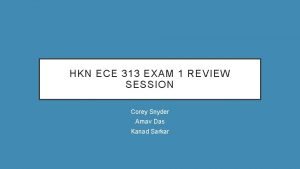

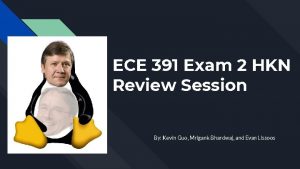
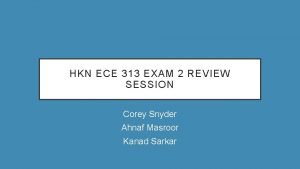
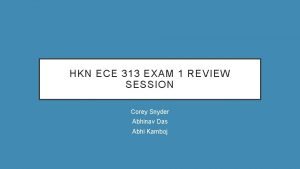

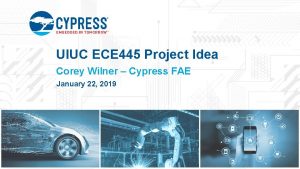

![Hkn ]ds; Hkn ]ds;](https://slidetodoc.com/wp-content/uploads/2020/12/3486362_ccd0d532001754d4165101283a392602-300x208.jpg)
